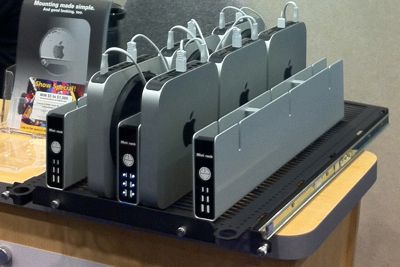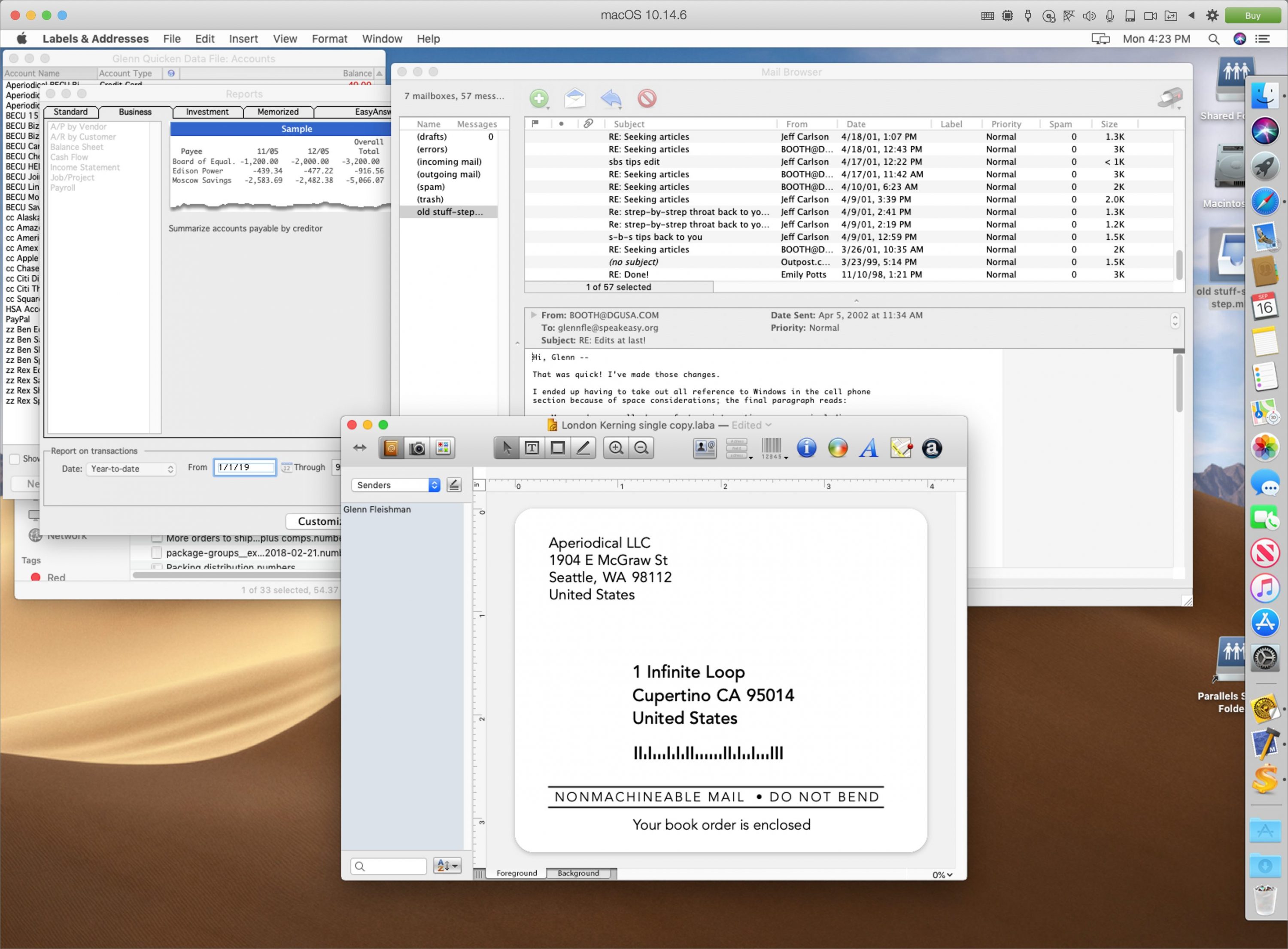One of the advantages of the Apple Macintosh is that it’s the only computer consumers can buy that is able to run both Apple’s own Mac operating system and Microsoft Windows on the same machine. That means that, if you prefer the Mac environment, but need to run a program only available in Windows, you can do so on the same Mac, and even at the same time.
Support for more versions of OS X. For instance, I would like to install Snow Leopard, but it is not supported. Parallels supports Snow Leopard Server but it is prohibitively expensive now, having gone up in price due to rarity and also likely because of people needing it due to the lack of support for normal Snow Leopard. Parallels 6 was optimized for OS X 10.6 Snow Leopard. But, Parallels 6 upgrades are no longer sold at Parallels.com. I entered 'Parallels 6 upgrade' into a popular search engine and found online vendors selling it for as little as $30. But then I heard from another user of Parallels that updated to Snow Leopard. He ran into the same problem: Drag’n’Drop worked only in one direction now. Most of the Snow Leopard fuss currently centers on the fact that Parallels 2.x and 3.x no longer work under Snow Leopard. Parallels made such a good and stable product that early users saw.
For instance, while I am writing this column on a Mac laptop in the Mac OS, using the Mac version of Microsoft Word, I am also simultaneously running the latest versions of Internet Explorer and Outlook—which aren’t available for the Mac—in Windows, on the same machine. I can switch back and forth among these programs with ease.
Question: Q: Snow Leopard, Yosemite, and Parallels I've been running Yosemite on an external HD - I think it's ok, but I still prefer Snow Leopard. However, 10.6 is getting left behind, and not upgrading is becoming harder and harder. Parallels Transporter transfers Windows applications to a virtual machine that can be used with Parallels Desktop (sold separately). LANGUAGES: English German French Italian Spanish REQUIREMENTS: - Requires an Intel-based Mac with Mac OS X Snow Leopard v10.6.8 or later or Lion v10.7 or later, 1 GB of memory or more, and about 150 MB of free.
Now, the two most popular software products for accomplishing this feat, Parallels and VMware Fusion, have been updated to run faster, and to support the latest versions of the two operating systems, Apple’s (AAPL) Snow Leopard and Microsoft’s (MSFT) Windows 7. Each costs $80 and requires a Mac running an Intel processor.
I’ve been comparing these latest versions, called Parallels Desktop 5 and VMware Fusion 3, using each to run Windows 7 on the same Mac laptop powered by Snow Leopard. My verdict is that, after falling behind Fusion for awhile, Parallels is now the best choice again. In my tests, it proved to be both faster, and more capable of handling the heavy-duty visual effects in Windows 7.
Both programs work by creating a so-called virtual machine—a software version of a physical computer—on the Mac. Inside these faux PCs, you can install any of dozens of operating systems and the applications that run on them. That includes numerous versions of Windows, including Windows XP and Vista, and, now, Windows 7. In order to do this, you will have to buy separately a new, full (not an upgrade) version of Windows, which costs about $200.
VMware Fusion’s Aero feature with Flip 3D effect
Both programs can run either the full Windows desktop, or individual Windows programs with the desktop hidden. Parallels now comes with a new mode, called Crystal, which integrates the Windows system even more, by placing the Windows Start menu and system tray icons in the Mac’s own top menu bar.
These virtual-machine programs shouldn’t be confused with Apple’s own built-in solution for running Windows on a Mac, called Boot Camp, which also has recently been updated to handle Windows 7. Boot Camp can’t run the two operating systems simultaneously; you must reboot the computer to switch between them. That gives Windows sole control of the hardware when it’s running, but many people find Boot Camp inconvenient. I didn’t test Boot Camp for this review.
Fusion 3, from Silicon Valley company VMware (VMW), is a relatively minor revision. The latest version is mainly designed to add speed, simplify the interface, make it compatible with Snow Leopard and Windows 7, and to improve graphics performance. It achieves most of these goals, but I still found it ran more slowly with Windows 7 than it did with Windows XP. It also was significantly pokier than Parallels 5.
In addition, I found that Fusion had occasional trouble with the transparency effects in Windows 7, such as its ability to turn transparent Windows that are open so you can see your desktop. It also occasionally switched off Windows’ new Aero feature, which offers live previews of task-bar icons. It sometimes turned all my Windows desktop icons white momentarily.
The bigger story is the comeback of Parallels, which is made by a Swiss-based firm of the same name. It was the first virtual-machine program for Intel-based Macs, but got eclipsed by Fusion. Now, the fifth version of Parallels is much faster and much better at the sophisticated graphics upon which Windows 7 relies.


In my tests, on a 2008-vintage MacBook Pro with 4 gigabytes of memory, Parallels 5 started up and had Windows 7 ready to roll nearly two minutes faster than Fusion 3. Windows 7 Home Premium launched from a cold start within Parallels about a minute faster than it did inside Fusion. And, when I restarted Windows 7 with several common programs running, it took two minutes and 23 seconds in Parallels 5, versus over four minutes in Fusion 3.
Beyond that, I found Parallels 5 handled the graphical previews and transparent effects in Windows 7 more quickly and smoothly than Fusion did. The Aero previews of running programs in the task bar appeared more quickly.
Also, I found Parallels 5 played high-definition video in Windows more smoothly than Fusion did. It also seemed to slow down the Mac side of the computer less.
Parallels isn’t perfect. In particular, it displays a black screen for a bit during start-up, something the company says it hopes to fix. And, while it shares the Mac’s printer, it confusingly mislabels it.
Neither of these programs is the answer for Mac owners who want to run the latest heavy-duty games or other graphics-intensive programs in Windows 7. For them, I recommend either Boot Camp or a separate Windows PC.
But, if you’re looking to run typical, everyday Windows programs on a Mac without rebooting, Parallels 5 is now the best solution.
Find all of Walt Mossberg’s columns and videos online, free of charge, at the All Things Digital Web site, walt.allthingsd.com. Email him at mossberg@wsj.com.
Windows on Mac Q&A - Revised March 22, 2010
To be notified of new Q&As, sign up for EveryMac.com's bimonthly email list.
If you find this page useful, please Bookmark & Share it. Thank you.
What is Parallels virtualization? How does it compare to emulation?
Virtualization, as used on EveryMac.com, refers to Intel's 'virtualization technology'. The Intel website describes virtualization as allowing:

A platform to run multiple operating systems and applications in independent partitions. With virtualization, one computer system can function as multiple 'virtual' systems. . . [you could run] different operating systems and software for different or legacy tasks.
In very basic terms, virtualization directly uses the underlying hardware to 'virtually' run multiple operating systems 'alongside' the host, whereas emulation 'recreates' a CPU, and often an operating system, in software. Ultimately, virtualization is much faster than emulation.
The virtualization solution that produced a tidal wave across the Mac web is Parallels Desktop for Mac, originally called 'Workstation'. After months of beta testing that 'generated more than 100,000 testers from 71 countries', Parallels released the 'final' version on June 15, 2006, and has been releasing even better beta versions and new 'final' versions ever since at a lightning pace.
The company rightfully boasts that:
Parallels Desktop for Mac is the first solution that gives Apple users the ability to run Windows, Linux or any other operating system and their critical applications at the same time as Mac OS X on any Intel-powered Mac.

Unlike dual-boot solutions, in which users must completely shut down Mac OS X and endure a full OS start-up cycle to access a important application, Parallels Desktop for Mac empowers users with the ability to run Windows programs. . . without having to give up the usability and functionality of their Mac OS X machine even for a few minutes.
The final version of Apple Boot Camp 2.0 released with MacOS X 10.5 'Leopard', officially supports only Windows XP Home or Pro SP 2 and Windows Vista, and Boot Camp 3.x released with MacOS X 10.6 'Snow Leopard' supports Windows XP, Windows Vista, and Windows 7. Parallels Desktop for Mac, on the other hand, supports effectively every version of Windows, as well as Linux, FreeBSD, OS/2 Warp, eComStation, Solaris, and MS-DOS 'in secure virtual machines running alongside Mac OS X'
For more on virtualization, you might like to sift through the reader reports provided by the always excellent MacInTouch and XLR8YourMac. Stuffit archive for mac.
Also see:
Parallels Snow Leopard Free
- What is VMWare Fusion? How does VMWare Fusion compare to Parallels Desktop for Mac?
- How fast is a Mac running Windows XP using Parallels compared to Boot Camp?
- How does the performance of Parallels Desktop for Mac 5 compare to VMWare Fusion 3? How does the performance compare for productivity applications? How does it compare for games?
Permalink | E-mail a Friend | Bookmark & Share | Report an Error/Typo
Suggest a New Q&A | Sign Up for Bimonthly Site Update Notices
<< Windows on Mac Q&A (Main)
Parallels Desktop Snow Leopard Compatibility
EveryMac.com is provided 'as is' without warranty of any kind whatsoever. EveryMac.com, and the author thereof, shall not be held responsible or liable, under any circumstances, for any damages resulting from the use or inability to use the information within. For complete disclaimer and copyright information please read and understand the Terms of Use and the Privacy Policy before using EveryMac.com. Use of any content or images without expressed permission is not allowed, although links to any page are welcomed and appreciated.
